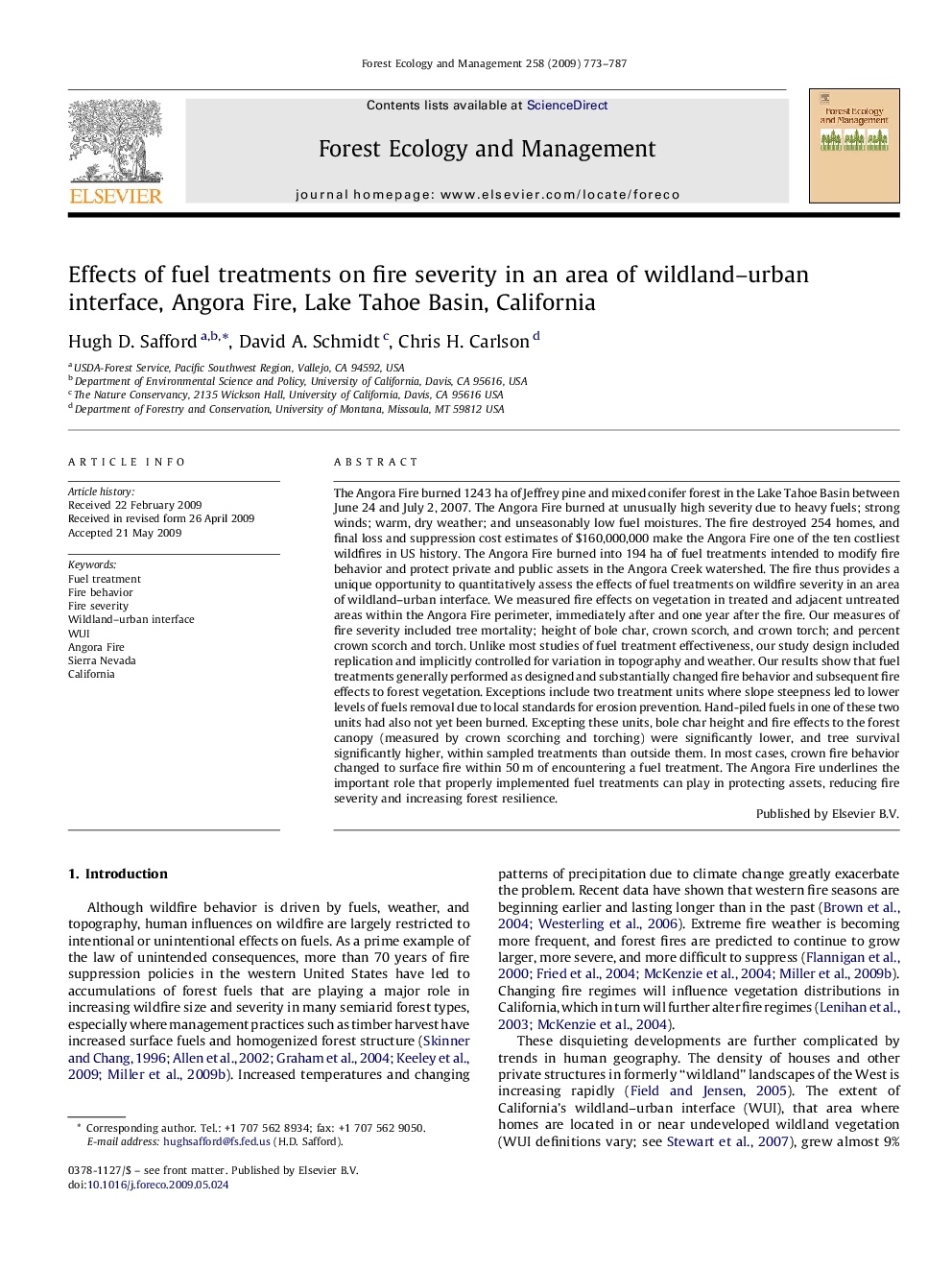| کد مقاله | کد نشریه | سال انتشار | مقاله انگلیسی | نسخه تمام متن |
|---|---|---|---|---|
| 89067 | 159331 | 2009 | 15 صفحه PDF | دانلود رایگان |

The Angora Fire burned 1243 ha of Jeffrey pine and mixed conifer forest in the Lake Tahoe Basin between June 24 and July 2, 2007. The Angora Fire burned at unusually high severity due to heavy fuels; strong winds; warm, dry weather; and unseasonably low fuel moistures. The fire destroyed 254 homes, and final loss and suppression cost estimates of $160,000,000 make the Angora Fire one of the ten costliest wildfires in US history. The Angora Fire burned into 194 ha of fuel treatments intended to modify fire behavior and protect private and public assets in the Angora Creek watershed. The fire thus provides a unique opportunity to quantitatively assess the effects of fuel treatments on wildfire severity in an area of wildland–urban interface. We measured fire effects on vegetation in treated and adjacent untreated areas within the Angora Fire perimeter, immediately after and one year after the fire. Our measures of fire severity included tree mortality; height of bole char, crown scorch, and crown torch; and percent crown scorch and torch. Unlike most studies of fuel treatment effectiveness, our study design included replication and implicitly controlled for variation in topography and weather. Our results show that fuel treatments generally performed as designed and substantially changed fire behavior and subsequent fire effects to forest vegetation. Exceptions include two treatment units where slope steepness led to lower levels of fuels removal due to local standards for erosion prevention. Hand-piled fuels in one of these two units had also not yet been burned. Excepting these units, bole char height and fire effects to the forest canopy (measured by crown scorching and torching) were significantly lower, and tree survival significantly higher, within sampled treatments than outside them. In most cases, crown fire behavior changed to surface fire within 50 m of encountering a fuel treatment. The Angora Fire underlines the important role that properly implemented fuel treatments can play in protecting assets, reducing fire severity and increasing forest resilience.
Journal: Forest Ecology and Management - Volume 258, Issue 5, 20 August 2009, Pages 773–787